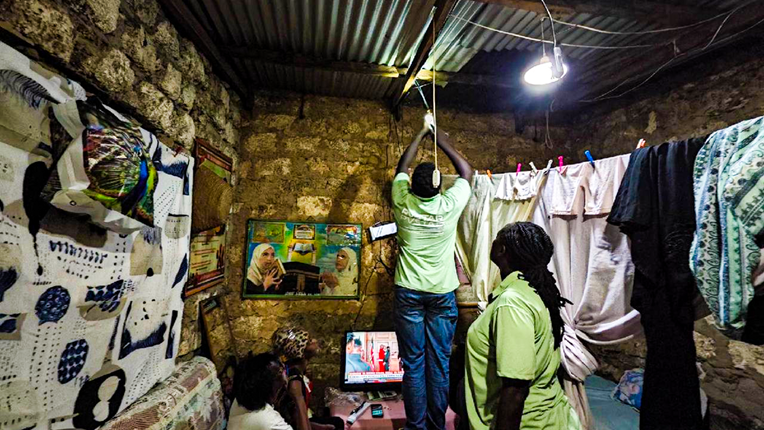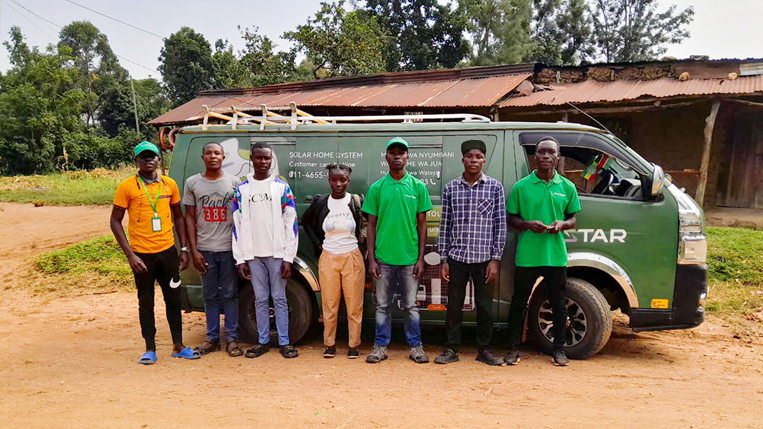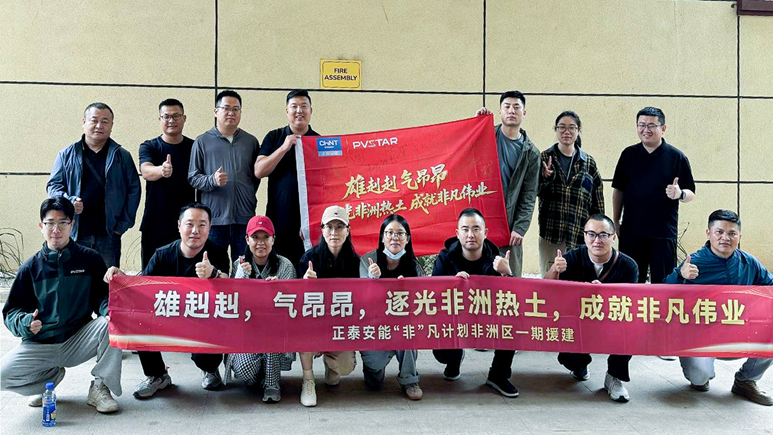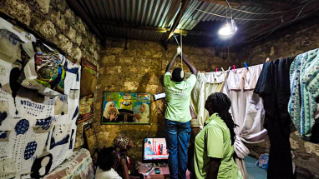“Children can now do their homework under electric light,” “Our whole family can finally watch TV together,” “With electricity, my small shop can stay open after dark”… For many, electricity is something taken for granted, but for numerous residents in Kenya, it has long been an unattainable luxury. The arrival of a Chinese enterprise is now helping more and more people realize the dream of having “electricity right at their doorstep.”
A year ago, CHINT Anneng launched its overseas residential photovoltaic brand, PVSTAR, with the philosophy of “Sun for all, pay as you glow.” The brand introduced an innovative integrated energy system solution tailored for household users. Since entering the African market, every CHINT PVSTAR photovoltaic system installed has been quietly bringing more light and hope to local communities.
Over the past year, the CHINT PVSTAR team’s journey in Africa has been filled with challenges, obstacles, achievements, and successes. Their story stands as a vivid example of how Chinese photovoltaic enterprises are supporting Africa’s power development through renewable energy technology and innovative models, including product exports, project cooperation, financial support, and creative applications.
In sub-Saharan Africa, over 500 million people still live without electricity. This not only means that a vast population lacks access to basic electricity services—such as lighting, cooling, and mobile phone charging—but it also severely constrains economic and social development.
Behind this enormous electricity gap lies tremendous opportunities for distributed renewable energy. As is well known, Kenya is a demonstration country for China-Africa cooperation under the Belt and Road Initiative. Over the years, Kenya-China relations have steadily strengthened, setting an example for China-Africa collaborative development. China has become Kenya’s largest trading partner and biggest source of imports.
Thus, when first setting foot on the African continent, the CHINT PVSTAR team chose Kenya, Tanzania, and Uganda as key markets, embarking on a green pioneering journey from zero to one.
Every beginning is difficult. As newcomers, the team faced near-zero brand recognition. How could they bridge the gap with users? How could they overcome the “last-mile” barrier in reaching scattered users in remote areas? In rural Africa, where economic levels are generally low, how could they make clean energy accessible and trustworthy for ordinary families? CHINT Anneng’s answer was: innovation deeply integrated with local needs.
To address payment challenges, the team introduced a flexible “Pay-As-You-Go” model, significantly lowering the barrier for low-income households and easing their financial pressure. This made clean energy affordable for average families, allowing them to move away from kerosene lamps and unstable power sources. This approach not only aligned with local consumption habits but also became a “golden key” to unlocking the market.
Of course, a good financial solution alone was not enough. To help even the most remote villages understand, trust, and ultimately choose CHINT PVSTAR, the team took to the streets to gauge user awareness and needs, launching offline roadshow campaigns with mobile demonstration vehicles.
Thus, scenes like this began to unfold day after day: under the scorching sun, vehicles equipped with off-grid residential PV systems traveled deep into rural areas, bringing real-life application scenarios right to users’ doorsteps. Local residents could see, touch, and experience firsthand the changes brought by clean electricity.
The results were unexpectedly positive. On-site consultations, hands-on experiences, and confirmed cooperation intentions formed an efficient closed loop. Meanwhile, CHINT vigorously developed local sales channels and networks, leveraging their geographical advantages and connections to achieve rapid customer growth and deep market coverage.
Naturally, the team stationed locally was not fighting alone. At the beginning of the market expansion, CHINT Anneng’s domestic division responded to the need by internally recruiting an “Africa Support Task Force” composed of key members from R&D, technology, sales, marketing, supply chain, and after-sales services. This team traveled thousands of miles to Kenya.
This support team adapted to local conditions, replicating and promoting the successful experiences, management models, and operational strategies refined over more than a decade in the domestic market. They provided hands-on training for local employees, imparting skills, explaining products, and analyzing markets. Through this series of coordinated efforts, they rapidly enhanced the local team’s capabilities, laying a solid talent foundation for sustainable business expansion.
As the sun sets and withdraws its last rays, darkness once was the most punctual “visitor” across the vast lands of East Africa. But for the first adopters—those Kenyans who installed CHINT PVSTAR photovoltaic systems—nighttime no longer means the end of daily activities.













